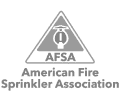How to Plan a Fire Escape in Tall Buildings
The number of skyscrapers being constructed today continues to increase as urban city planners look upward to make more room for growing populations. Of course, the taller and more complex the building, the more difficult and time-consuming it is to evacuate in case of a fire emergency. If you own or manage a tall building in Houston, use this information to help you create a fire escape plan.
Do you have a fire protection plan? Call us today at (713) 893-1090 or contact us online to learn more about fire safety for your commercial business.
Understanding Fire Hazards in Tall Building Structures
For typical buildings, fire safety techniques are divided into two categories: evacuation strategies and building performance. The time associated with an evacuation is usually measured in minutes, while structural failure is measured in hours. This means buildings typically remain intact far longer than it takes to get everyone out.
However, things are different for tall buildings. The exaggerated heights, potentially high volume of people, the limited number of vertical escape routes, and the inability to use the elevator extend evacuation times until they are comparable with the structural failure timeframe. If the two times overlap, the results are tragic.
How to Make Tall Buildings Safer During a Fire
To help ensure everyone makes it out of a tall building safely, employ these fire escape techniques:
Pressurize the Stairwells
Installing more stairwells and making them wider are irrelevant techniques if these egress paths fill with smoke. Therefore, you should employ a pressurization system to keep the stairwells at a higher pressure than surrounding areas. This discourages smoke from flowing into the stairwells.
Evacuate in Phases
Assuming the building possesses superior structural integrity and fire protection systems, it may not be necessary to evacuate the entire building. In fact, manual pull stations are often only linked to the surrounding floors to prevent creating unnecessary panic.
In a phased evacuation, occupants on floors immediately adjacent to the fire, who are in the most danger, evacuate first. Firefighters then attempt to contain the fire and only evacuate other floors if necessary.
Allow the Use of Elevators
Anyone who has ever waited outside an elevator can recite the emergency sign from memory: “In case of fire, use stairs.” However, the National Fire Protection Association (NFPA) made code changes in 2012 in response to the 9/11 attacks, where about 3,000 people escaped the south tower via elevator after the north tower was hit.
On average, evacuation from a tall building can decrease from over an hour to just 20 minutes if occupants are permitted to use the elevator before fire responders take over. Of course, this requires additional fire protection since unguarded elevator shafts are at risk of having smoke pour in and smother elevator passengers.
Schedule Fire Protection Services for Tall Buildings in Houston
Clearly, careful consideration is required to create a fire escape plan in tall buildings. Let Kauffman Co. help you formulate a code-compliant fire protection design. We have over 35 years of experience as one of Houston’s leading fire protection companies, and we’ll install every component necessary to make your building as safe as possible.
Don’t wait until a fire emergency strikes or a code violation slaps you with a hefty fine—contact Kauffman Co. today for help planning a fire escape in your tall Houston-area building.















